GOING TO POST SOME PICS OF OUR TIMES WE GOT VIP PASSES TO THE VARIOUS NASCAR RACES. ON THIS PAGE I'LL POST SOME PICS OF HOW THEY DO VARIOUS TECH CHECKS AND TRY TO EXPLAIN WHAT YOU ARE SEEING.
A quick overview of the Technical Inspection Process:
TEMPLATES - Aluminum templates are fitted over the race vehicle to measure the aerodynamic profile. A collection of 19 templates are welded together - called "the Claw" - are lowered onto the surface of the vehicle to assure they are all the same. There are also separate templates that fit the nose, tail section, fenders, etc that are also tested for fit.
SCALES - Each car is rolled onto the scales in race ready condition. This includes gas, oil, and all other fluids in place. The car must weigh 3400 pounds including the driver. Vehicles are also measured for 'cross weight'. The right side of the car must weigh at least 1625 pounds. This rule prevents cars from having too much weight on the left side of the car. Because NASCAR races are with left-hand turns, drivers would want to have more weight on the left side of the car to aid in turning. The right-side rule limits this advantage. Cars are weighed by NASCAR officials before each weekend's race events begin, beginning with a pre-practice weigh-in. Another weigh-in is conducted before qualification, and a third before the actual race. All weigh-ins are performed on NASCAR's official scales.
LASER PLATFORM - The laser platform was introduced in 2013 and is NASCAR's biggest technological leap. about 60 points on the car; such as front and rear wheel cambers, wheel base, and rear axle location are measured. Measurements must be as precise as 1/1,000th of an inch.
Failing ANY of the steps in the inspection process will cause a competitors vehicle to have to go back to the rear of the inspection line and start the inspection process over again after adjustments are made. Cars may also be fined or points penalties assessed for continued violations, or more severe tech violations.
Basic Specification for a NASCAR CUP car as of 2018.
CHASSIS - steel tube frame with safety roll cage meeting NASCAR requirements
ENGINE - 8560 CC (5.86 L; 357cu in) push rod V8
TRANSMISSION - manual 4 speed
WEIGHT - 3400 pound minimum including driver in race ready condition
POWER OUTPUT - 725 horse power
OIL CAPACITY - 16 quarts
FUEL - 98 octane E15 Sunoco race fuel
FUEL CAPACITY - 17.75 US Gallons
FUEL DELIVERY - Port Fuel Injection
COMPRESSION RATIO - 12:1
ASPIRATION - Naturally aspirated
WHEELBASE - 110 inches
STEERING - power
TIRES - GoodYear 11.5 inch wide racing slicks - approximate cost of $1,900 per tire.
LENGTH - 200 inches
HEIGHT - 53.5 inches
WIDTH - 74.5 inches
In 2018 NASCAR implemented an entirely new inspection system called the Hawk Eye System. The camera-based inspection station replaces the old laser inspection station and the claw template station teams had to pass through before and after races. It is a much faster process and greatly closes down the "wiggle room" teams have been able to find in the past.
First the car is rolled into a tent and the curtain closed. The tent has projectors installed and the projectors will display patterns of lights, lines and dots on the cars that the cameras will track. The process takes about 30 seconds. You can see the entire process in the video provided. During the 30 seconds, the cameras have captured enough data to create a “point cloud,” which makes a 3D model of the car. That is then compared to the CAD model of the car to determine how far away the car is from the tolerance. Teams will be given a .150-inch tolerance on metal surfaces and a .200-inch tolerance on glass surfaces. Teams will not be allowed on track to practice until they’ve passed the Hawk-Eye system. If a team fails inspection they have to work on the car to fix the problem areas, and go to the back of the line for reinspection. If a car fails three times they will have a time penalty during practice. If they fail a fourth time they have to start from the rear and their car chief is automatically ejected for the race weekend. Fines and other penalties may be imposed. Here is a video of the system in action
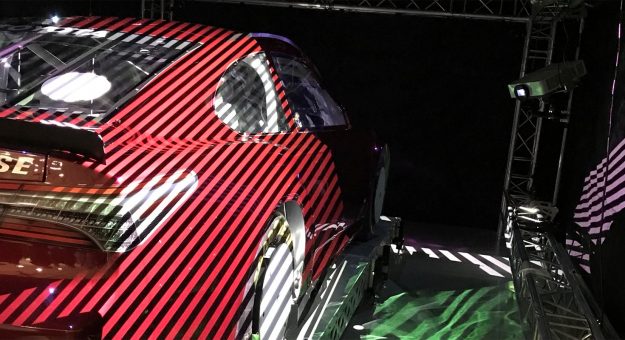
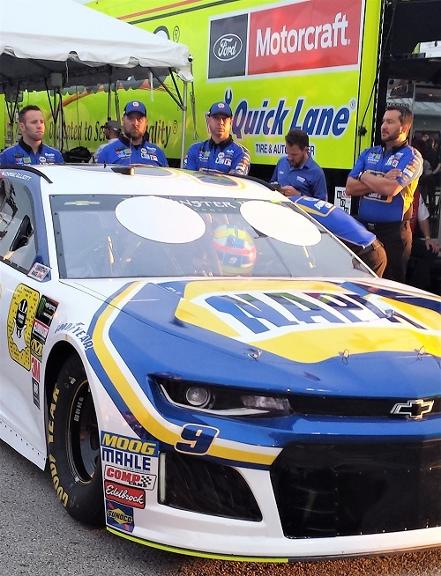
I'm sure many of you wonder why these large white circles are placed on the windshields. I had to ask someone myself.
It seems that with the new "Hawk Eye" system they use, it has to have something to "read"
So they place these disc on the windshields so that the system will read them and know where the windshield is and how to properly measure the contours of the car.
Some photos below are now outdated;.. but others are "new" and are used under updated technical inspection procedures. I had this posted before the new inspection system took over; so I'm going to leave it so you know how it "used" to be. and how some new inspections are added.
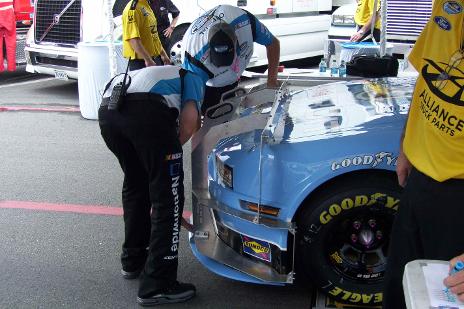
As you know the CUP series uses a full body length template they call 'the claw' that fits the entire car at ones.

Here in the Nationwide series they have separate templates. These two pics show the templates to fit the nose, and rear end.

Here is the template that fits the hood, you'll notice it is fitted for every contour of the hood, and even as it rolls off onto the fenders
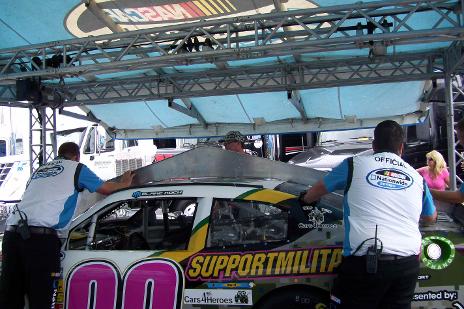
This is the full length template that runs from the front to rear of the car. Tolerances are strictly enforced

They have these templates to check for proper curve of the windshields from side to side. Check out the 'arm' that sticks up from the template and goes up to the top of the window
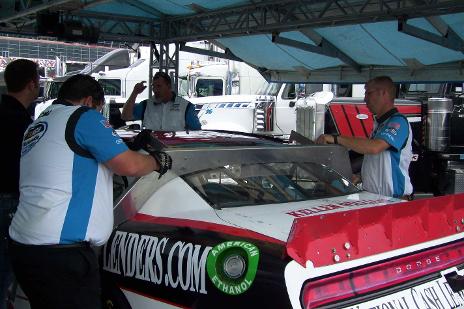
You'll see the templates have a gauge that makes sure the measure is taken at the exact same place on every car. It fits right up against the top of the window opening

Here a crew member takes the cover off of the wheel so they NASCAR Gauge can measure various stages of wheelbase, width, etc
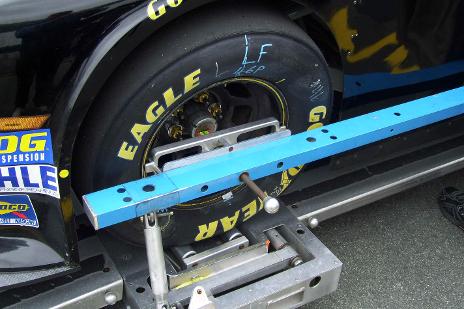
This checks for overall wheelbase length. It is attached to a specific place on the rear axle and the reading is taken here on the front axle.
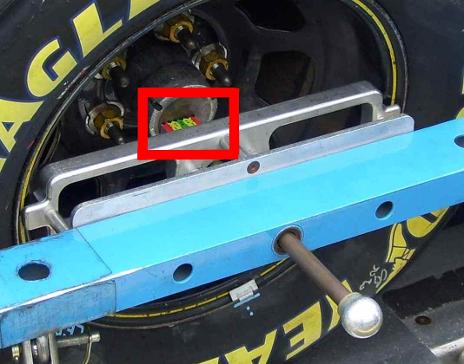
Here is a close-up of the gauge. You can see the green and red "go / no-go" allowances. Green and yellow is OK, Red says it fails inspection and has to be changed. Usually tech inspection station checks two or three different things
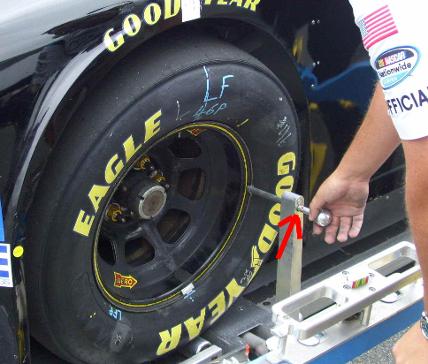
This measures the width of the front wheelbase. On the opposite side is a stationary rod positioned at exactly the same place as this one. (on the wheel lip). There is a go / no-go indicator where the arrow I added is

They inspect the cars ride height at various points at this station. You can see the red box I added has the height gauge for the rear of the car.

Here you can see the height sticks used to check the front. You'll see the hood is open so if it needs to be adjusted they can access the jacking bolts
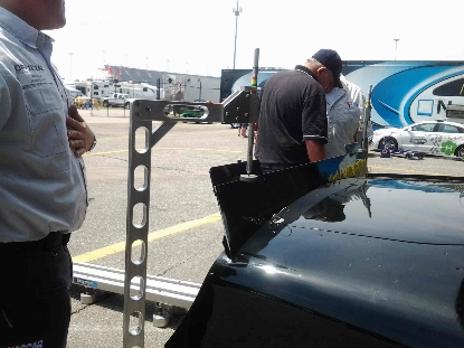
Here is a better look at the height sticks. CUP does not check height any more, But Nationwide and Trucks still do. You can see in the rear it sets on top of the spoiler (not the tabs on top)

Here is a close up of a height stick. If you look close you'll see this car fails. The indicator sits JUST in the yellow (you can see all the green). So they'll have to lower the rear of this car.
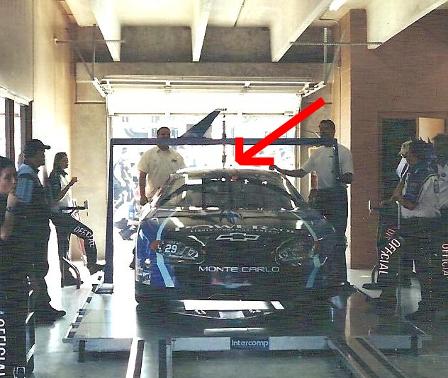
Here is where the roof height is measured. The car rolls under the gauge which hangs down (see red arrow). Like the other gauges it has the go / no-go indicators.
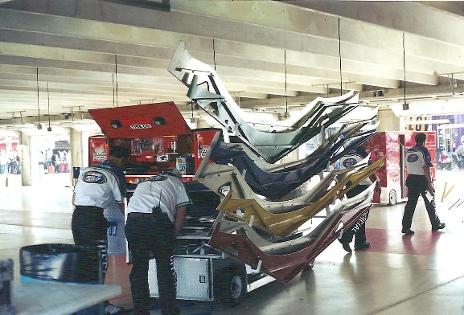
Here are some of the templates I showed before. They are color coded, one color for Chevy templates, another for Ford, etc.
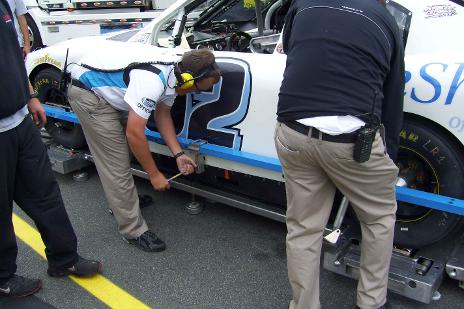
I have to find out what this measures. There is a hole in the side of the body, and this rod goes in and hits something... I'll find out and post this then.

This is a newest addition to NASCAR Inspection. With the laser inspection all the race car chassis have RFID Chips attached, and NASCAR can track all of the cars. This is also the system mentioned above that checks 60 different spots on the car.
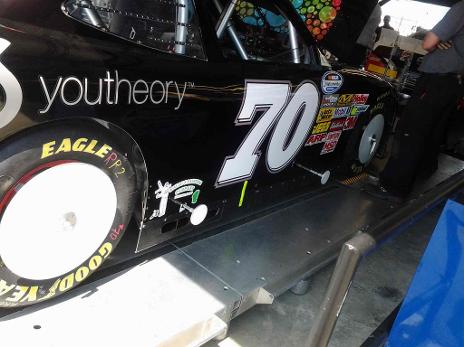
I'll OK - I FOUND OUT - Actually they also changed the process. Here you see some disc attached to the cars wheels. Also you see two pins attached to the same place as in the pic above. This is NASCAR's new laser tech scanner. It measure many different items, and it 'reads' these plates to get the squareness, width, etc etc.

Here you can see the wheel disc again. They mount over the lugs. You'll also see there is a bar that hangs down off the center of the disc. This moves and lines up by gravity. I THINK it checks camber. ON the picture on the left you'll see two rods inserted into the body with a white disc on the end; this is also parts of checking frame width, etc
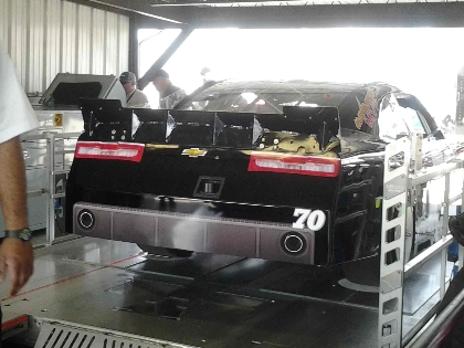
Wish I had a video of this thing in action. Teams just roll the cars up on the pads, and it moves itself to align with all the lasers so it can check the cars the same every time. Pretty cool piece of technology.
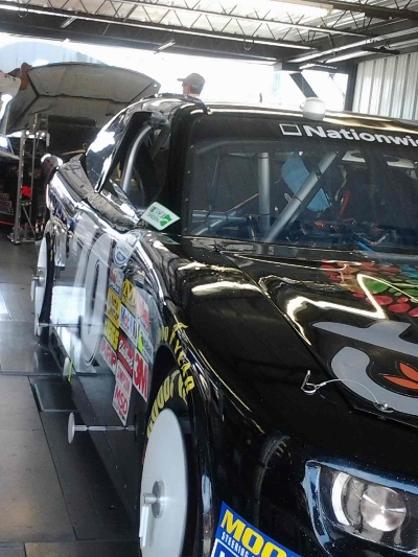
Here is another view of the laser inspection area. Here you can clearly see the wheel disc and also the rods inserted into the car body.
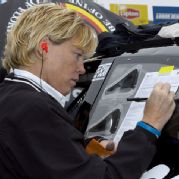
Each car comes with a Technical Inspection sheet. The inspector checks off things that meets requirements, and notes things that need fixed. Contrary to popular belief much of the technical / safety inspection is done in the cars garage stall. For many of the items, the inspectors come to the race car and inspect such things as safety belt and seat mounting, roll padding, etc.. a very extensive list.
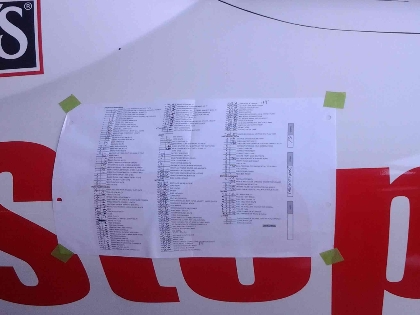
Here is a good look at the inspection sheet the NASCAR officials come by and check out. Not that you can read it, but they either mark an "OK" or note what needs fixed. As you can see there is a long list. The new Hawkeye system inspects the body; but a massive amount of things have to be checked; proper seat and seat belt installation; the fuel tank is safety checked, and also checked to make sure it doesn't hold more than the 'allowed" amount, alsoengine compression, many varied safety checks and other things. The inspectors even get on a rolling dolly and go under the car in the rear end and come out on the front end, checking a variety of things under the car.
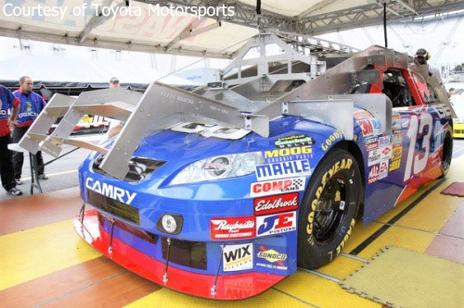
This is a new inspection item named "the Claw". It sits down over the top of the car, and tests the car all as one unit. This puts even tighter restrictions on the teams to keep the bodies all the same. Additional templates can be attached so all readings are taken 100% the same.
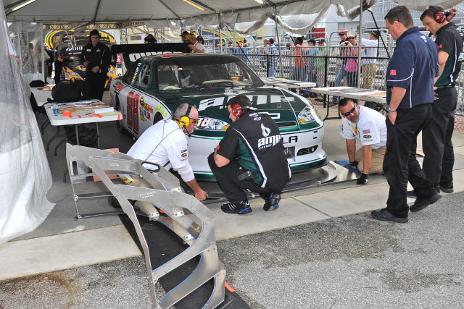
The template sitting in the left side of the picture is the template that fits the nose of the car. It attaches after the Claw is sat down on the car. NASCAR has went back more to cars looking at show room cars, so each brand of car has a separate template.

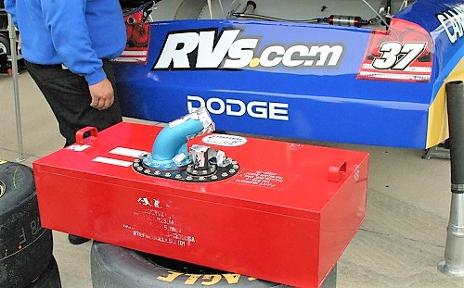
This particular race NASCAR was inspecting the fuel cells and the check valves. This is what one of the fuel cells look like outside the car. Fuel cells are inspected periodically as part of the strict safety inspection.
To the left is a fuel cell under inspection. This is where the fuel line connects from the fuel filler. The yellow arrow points to the "check Valve". You'll see a large stainless steel ball there in the bottom, if the car flips over the ball rolls up to the top, and prevents fuel from spilling out to help prevent a fire. The overfill line also has a stainless steel ball that works like the large ball.
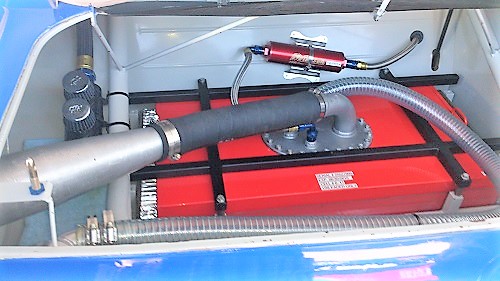
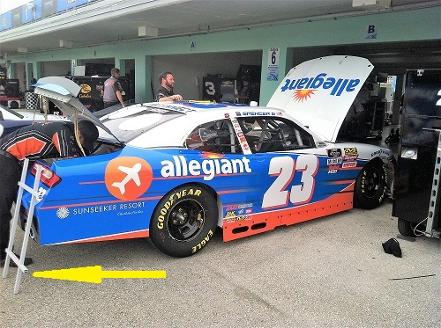
On the right is a picture of the fuel cell placed in the car. You'll notice it is securely bolted onto the chassis. The black bars running across the cell is what holds it in place. You'll also notice the cells sits in a recessed area in the trunk are to prevent it from shifting left to the side. The large tubing (in lower left of photo) is the fuel filler line. This is where the fuel can plugs into the side of the car to fill the tank. Next to where the fuel goes into the cell you will also see a smaller ribbed tubing. This is the over-flow line that fuels runs out of when the tank is full Also mounted on the firewall you will see a red tube-like things about a foot long. This is the fuel filter. Works just like your filter in your car at home. The photo on the right shows the fuel cell brace bar out of the car. (the gray things with the yellow arrow pointing to it). This gives you some idea of the size of it.
The photos above are from technical spection on David Ragan's car at Homestead in 2018. EVERY aspect of a car is inspected. If you look closely you'll notice an inspector on a dolly under Ragan's car inspecting various things. In the picture on the right you can see two inspectors under the car and one checking items in the trunk area.
The photos above show new measurements taken in 2018. With the new fenders and elimination of ride heights cars must still maintain certain standards. In the picture at left you see the inspector measuring the distance from the ground up to the opening on the rear panel. The photo at left shows a template that measures the fenders shape. You can see a yellow arrow on the photo. The template has that narrow gap opening, and the bottom of the fender opening must fit within the tolerances of that gap. Mostly in the gap you see the bottom of the fender and also a small opening (where the arrow is) that runs the length of the gauge.
You all have probably saw these on TV - Just thought I explain what they are (things under the wheels). Basically it's a device to have to keep from jacking up the car over and over. Half of the pad is static. When teams work on the car the roll it onto the static part; make any adjustments, and then roll it back onto the other part. THAT part is a set of scales. SO they can weigh the car and see how they can maximize things like left side weight, etc. and how the changes they made effect the weights. NASCAR checks weights on all four corners of the car. For example there is a maximum "left side" weight. By changing the shocks or jacking wedge into the car you won't change the overall weight of the car; but it will change the left side weight of the car. All four corners of the car must meet weight requirements.
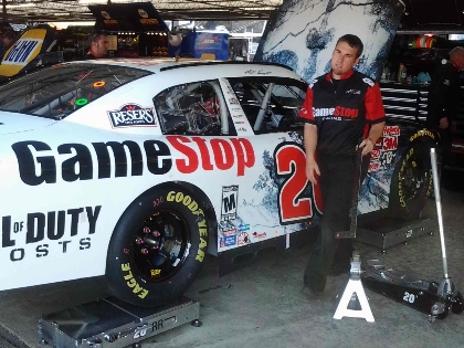
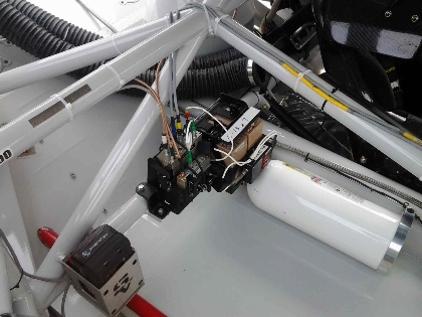
This isn't tech, but interesting anyway. This is the set up for the in-car camera system. On the lower left you'll see the battery supply; in the center of the picture is a set up much like you'd find on the back of your TV set. You can see the RCA jacks and connections.
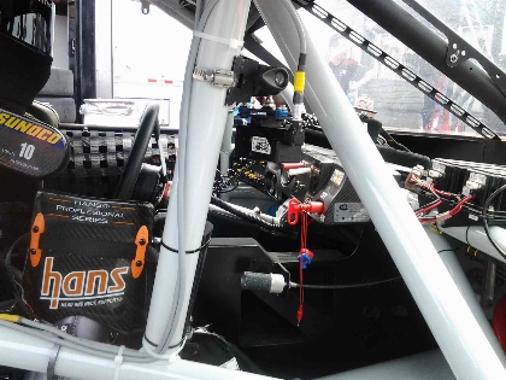
In the picture on the left you'll also see a gray cable (with yellow tape) coming from the Video box, attached to the roll bar. IN this pic you'll see as the gray cable continues on the roll bar; goes up vertically, then loops around and attaches to the camera. (black box mounted on roll bar)
All Photos copyright and are property of their respective owners
